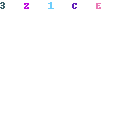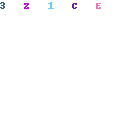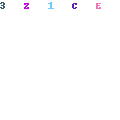ZHCSDR2 April 2015
PRODUCTION DATA.
- 1 特性
- 2 应用
- 3 说明
- 4 典型应用
- 5 修订历史记录
- 6 Pin Configuration and Functions
- 7 Specifications
- 8 Detailed Description
- 9 Applications and Implementation
- 10Power Supply Recommendations
- 11Layout
- 12器件和文档支持
- 13机械、封装和可订购信息
9 Applications and Implementation
NOTE
Information in the following applications sections is not part of the TI component specification, and TI does not warrant its accuracy or completeness. TI’s customers are responsible for determining suitability of components for their purposes. Customers should validate and test their design implementation to confirm system functionality.
9.1 Application Information
9.1.1 Liquid Level Sensor
The FDC1004Q can be used to measure liquid level in non-conductive containers. Capacitive sensors can be attached to the outside of the container or be located remotely from the container, allowing for contact-less measurements. The working principle is based on a ratiometric measurement; Figure 15 shows a possible system implementation which uses three electrodes. The Level electrode provides a capacitance value proportional to the liquid level. The Reference Environmental electrode and the Reference Liquid electrode are used as references. The Reference Liquid electrode accounts for the liquid dielectric constant and its variation, while the Reference Environmental electrode is used to compensate for any other environmental variations that are not due to the liquid itself. Note that the Reference Environmental electrode and the Reference Liquid electrode are the same physical size (hREF).
For this application, single-ended measurements on the appropriate channels are appropriate, as the tank is grounded.
Use the following formula to determine the liquid level from the measured capacitances:

where
- CRE is the capacitance of the Reference Environmental electrode,
- CRL is the capacitance of the Reference Liquid electrode,
- CLev is the current value of the capacitance measured at the Level electrode sensor,
- CLev(0) is the capacitance of the Level electrode when the container is empty, and
- hREF is the height in the desired units of the Container or Liquid Reference electrodes.
The ratio between the capacitance of the level and the reference electrodes allows simple calculation of the liquid level inside the container itself. Very high sensitivity values (that is, many LSB/mm) can be obtained due to the high resolution of the FDC1004Q, even when the sensors are located remotely from the container.
For more information on a robust liquid level sensing technique, refer to Capacitive Sensing: Out-of-Phase Liquid Level Technique application note (SNOA925) and the Capacitive-Based Liquid Level Sensing Sensor Reference Design (TIDA-00317).
9.2 Typical Application
 Figure 15. FDC1004Q (Liquid Level Measurement)
Figure 15. FDC1004Q (Liquid Level Measurement)
9.2.1 Design Requirements
The liquid level measurement should be independent of the liquid, which can be achieved using the 3-electrode design described above. Moreover, the sensor should be immune to environmental interferers such as a human body, other objects, or EMI. This can be achieved by shielding the side of the sensor which does not face the container.
9.2.2 Detailed Design Procedure
In capacitive sensing systems, the design of the sensor plays an important role in determining system performance and capabilities. In most cases the sensor is simply a metal plate that can be designed on the PCB.
The sensor used in this example is implemented with a two-layer PCB. On the top layer, which faces the tank, there are the 3 electrodes (Reference Environmental, Reference Liquid, and Level) with a ground plane surrounding the electrodes. The bottom layer is covered with a shield plane in order to isolate the electrodes from any external interference sources.
Depending on the shape of the container, the FDC1004Q can be located on the sensor PCB to minimize the length of the traces between the input channels and the sensors and increase the immunity from EMI sources. In case the shape of the container or other mechanical constraints do not allow having the sensors and the FDC1004Q on the same PCB, the traces which connect the channels to the sensor need to be shielded with the appropriate shield. In this design example all of the channels are shielded with SHLD1. For this configuration, the FDC1004Q measures the capacitance of the 3 channels versus ground; and so the SHLD1 and SHLD2 pins are internally shorted in the FDC1004Q (see The Shield).
9.2.3 Application Performance Plot
The data shown below has been collected with the FDC1004QEVM. A liquid level sensor with 3 electrodes like the one shown in the schematic was connected to the EVM. The plot shows the capacitance measured by the 3 electrodes at different levels of liquid in the tank. The capacitance of the Reference Liquid (the RF trace in the graph below) and Reference Environmental (the RE trace) sensors have a steady value when the liquid is above their height while the capacitance of the level sensor (Level) increases linearly with the height of the liquid in the tank.
 Figure 16. Electrodes' Capacitance vs. Liquid Level
Figure 16. Electrodes' Capacitance vs. Liquid Level
9.3 Do's and Don'ts
Avoid long traces to connect the sensor to the FDC1004Q. Short traces reduce parasitic capacitances between shield versus input channel and parasitic resistance between input channel versus GND and shield versus GND.
Since the sensor in many cases is simply a metal surface on a PCB, it needs to be protected with solder resist to avoid short circuits and limit any corrosion. Any change in the sensor may result in a change in system performance.
9.4 Initialization Set Up
At power on the device is in stand-by. It stays in this mode until a measurement is triggered.